Book Reviews: AI & Emerging Technologies
Published on June 25, 2025
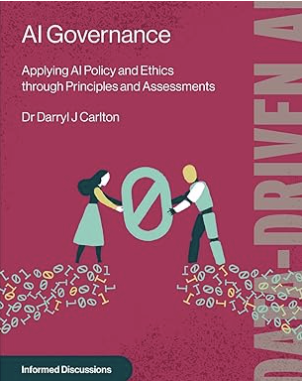
AI Governance: Applying AI Policy and Ethics through Principles and Assessments
Darryl J. Carlton. Bradley Beach, NJ: Technics Publication. 2024. 82 pages, including index.
Index Terms—AI governance, ethical AI practices, European Union AI Act.
Reviewed by Jackie Damrau, IEEE PCS Member.
Darryl J. Carlton’s book, AI Governance: Applying AI Policy and Ethics through Principles and Assessments, is a short, no-nonsense look into how Australia’s AI Ethics Principles and the European Union’s (EU) AI Act are looking at Artificial Intelligence (AI).
This book has four chapters: “A Brief History of AI,” “The Eight Guiding Principles of AI,” “Ethics and AI,” and “Conformance Assessment Checklist.” These are succinct, short chapters that provide contextual background that gives the reader enough information to understand why they would want to continue researching these areas on their own. Chapter 2, “The Eight Guiding Principles of AI,” and Chapter 3, “Ethics and AI,” each include two subsections: an Examples section that provide three instances related to how AI is being responsibly used and where it was not, and a References and Sources sections that shows the statements Carlton used and the cited source of that statement.
In the Preface, Carlton states that organizations should begin outlining their “obligations, rights, and responsibilities” based on two things: 1) “every country will eventually put legislation in place to establish guardrails for the use and operation of artificial intelligence, and 2) if you offer your product or service in global markets, then you will be governed by the legislation of those markets, not just your home location” (p. iv). Dr. Carlton also covers:
- AI Ethical Framework components of 1) Human, Social, and Environmental Well-Being, 2) Human-Centered Values, 3) Fairness, 4) Privacy Protection and Security, 5) Reliability and Safety, 6) Transparency and Explainability, 7) Contestability, and 8) Accountability, and
- The eight AI principles “from a comprehensive analysis of global approaches to AI governance” (p. 1).
Chapter 4 provides a comprehensive, self-directed Conformance Assessment Checklist that the EU has stipulated to use leading to “CE Certification for the deployment of AI systems into any member country of the EU” (p. 3). This four-part Assessment includes “AI Systems Overview;” “Governance and Oversight;” “Data and Documentation;” and “Operations, Risk & Retirement.” The third part, “Data and Documentation,” is of importance to technical communicators working with AI initiatives. It recommends identifying the transparency and -provisioning of information to the users by asking the following (p. 72):
- Describe how the AI system is designed and developed to ensure…enabling users to interpret and use [the software’s] output appropriately.
- Do the AI systems’ instructions for use…include concise, complete, correct, and clear information that is relevant, accessible, and understandable to users?
AI Governance, while small, is a book that you will want to really spend time reading and thinking how to incorporate the information Carlton brings to light. Even though this book is from the perspective of the Australian and EU governance entities driving protection for their citizens and member countries, you will find valuable information to increase your knowledge on AI governance principles.
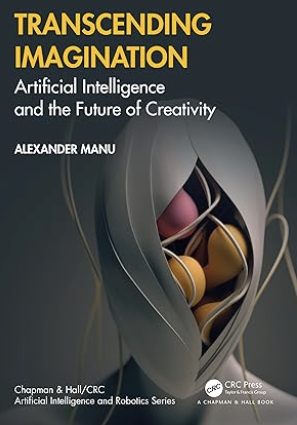
Transcending Imagination: Artificial Intelligence and the Future of Creativity
Alexander Manu. New York, NY: CRC Press/Taylor and Francis Group. 2024. 264 pages, including index.
Index Terms—AI collaboration, human-machine creativity, artistic design.
Reviewed by Donald R. Riccomini, Emeritus Senior Lecturer in English, Santa Clara University.
Alexander Manu, in Transcending Imagination: Artificial Intelligence and the Future of Creativity, argues that artificial intelligence (AI) functions “as a collaborator” (p. 37) in artistic design and invention, and that “art is not limited to the intentions of the creator” (pp. 16–17). Art is no longer a purely human invention, but a collaboration that results in an ambiguous relationship “between human and machine creativity” (p. 101). As the “role of humans evolves from direct creators to facilitators” (p. 75), the “demarcation between creator and tool becomes increasingly blurred” (p. 60), until finally “the form is created without artistic intervention, culminating in outputs exceeding human imagination and expectations” (p. 74). This process completes AI’s “evolution from a simple, rule-following agent to a sentient-like entity capable of learning, adapting, and creating” (p. 114). Operating without human direction, AI eventually displaces humans as the primal creative force.
Or does it? Manu also argues that AI “does not possess intention” and “cannot instigate creation independently” (p. 15), because “our vision is a directive force shaping the system’s ensuing manifestations,” so that “we exercise influence over the final results, steering them toward our envisioned outcome” (p. 78). If the artist remains necessary to initiate and influence the creative process, can AI take final, independent control of the creative process?
The answer may lie in situating Manu’s argument within an historical context. Artists have always borrowed themes and techniques from previous artists. Shakespeare’s plays rework and reimagine earlier versions of the same basic story or archetype, as did his predecessors before him. The earlier texts act like AI, as an inventory of antecedent artistic choices, techniques, and inputs that prompt different ways to realize the artist’s vision. Yet the new play also transcends all previous work in its originality. Older texts are absorbed and refashioned in unpredictable ways reflecting the artist’s intention, and not as a purely mechanical or accidental recombination of parts based on a fixed set of rules.
These elements both affirm the underlying archetypal structure and introduce unique elements that “detach from conventional concepts and delve into alternate forms” (p. 178). Those “forms” do not invalidate the archetype, they reinvigorate it, adapting the archetype to a specific time and place conceived by the artist’s vision, and introducing new variations while absorbing and recontextualizing older ones, all under the final control of the artist.
AI, therefore, can serve as an online library or database of previous archetypal variations that supplement the artist’s unique choices by suggesting alternatives the artist—the “directive force”—may not have considered or known about, and can decide to include or not. AI acts as an automated version of the traditional assistant artist, who carries out background or focused work under the supervision of the main artist. In that sense, Manu may be right that AI is transforming imagination, but only insofar as the artist allows.
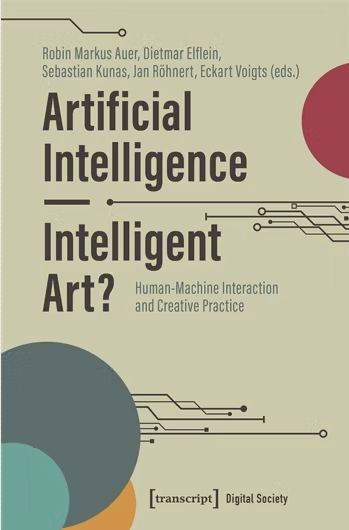
Artificial Intelligence—Intelligent Art? Human-Machine Interaction and Creative Practice
Robin Markus Auer, Dietmar Elflein, Sebastian Kunas, Jan Röhnert, and Eckart Voigts, eds. Bielefeld, Germany: transcript publishing. 2024. 294 pages.
Index Terms—artificial intelligence, human-machine interaction, ethical AI practices.
Reviewed by Pradhika Yudha Dharma, Student, Universitas Gadjah Mada, supported by Lembaga Pengelola Dana Pendidikan (LPDP), Indonesia.
Artificial Intelligence—Intelligent Art? Human-Machine Interaction and Creative Practice explores artificial intelligence’s (AI) potential as a collaborator in creative writing and music. While acknowledging technical hurdles and cultural biases in AI-generated works, the research highlights the value of human-machine interaction in artistic endeavors. It emphasizes small-scale art projects as testing grounds for this collaboration, even allowing for self-reflection within AI systems. While AI can inspire new art forms and transmedia storytelling, human intelligence still plays a crucial role in bridging cultural gaps. The study explores this shift towards machine-based creativity and its impact on the future of artistic expression.
Editors Eckart Voigts, Robin Markus Auer, Dietmar Elflein, Sebastian Kunas, Jan Röhnert, and Christoph Seelinger use various methods to explore human and machine creativity interactions. These methods include collaborative annotation, which reflects on the development of AI technology in artistic practice, and GPT-2 Simple, which generates texts based on 21 pandemic-related fiction texts. This approach involves refining the AI model and using voice techniques from post-Grotowski actor training to test the physical presence of vocals in space. An interdisciplinary approach combining insights from literature, music, cultural studies, and AI technology underpins the research’s objectivity. The study’s goal is to investigate human practitioners’ perceptions of AI systems and develop ethical approaches to AI practice. Significant contributions include highlighting AI’s potential as a collaborative tool in artistic practice, developing tools that facilitate self-reflection within AI systems, and providing a historical analysis of the relationship between technology and art. The study also identifies cultural and semantic weaknesses in AI-generated creative works, emphasizing the need for human understanding to bridge these gaps.
This study’s strength lies in its interdisciplinary approach, drawing on literature, music, cultural studies, and AI for a holistic understanding of AI in art. It uses innovative methods like collaborative annotations and refined AI models to showcase AI’s potential as a collaborator, not a replacement, and emphasizes self-reflection in both humans and machines. However, AI-generated creative work tends to have cultural and semantic flaws that require human intervention to bridge these gaps. Reliance on a specific dataset limits the generalizability of findings, and the focus on small-scale artistic projects may not fully capture AI’s implications in large-scale commercial artistic production. The complexity of formulating story automation programs, as well as the nuanced differences between speech and images at the technical level, present challenges.
Artificial Intelligence – Intelligent Art? examines AI as a creative partner in literature and music focusing on researchers in AI, the digital humanities, and interdisciplinary fields. It challenges traditional authorship and artistic boundaries advocating for ethical human-machine collaboration. Employing diverse methods and small-scale art projects, the book analyzes AI’s potential and limitations in artistic creation offering valuable insights for those interested in the intersection of AI and art.
Back to Book Reviews[/vc_column_text][/vc_column][/vc_row]
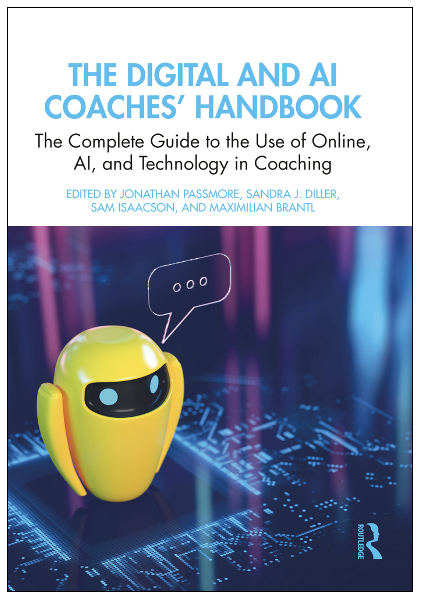
AI-Driven Project Management: Harnessing the Power of Artificial Intelligence and ChatGPT to Achieve Peak Productivity and Success
Jonathan Passmore, Sandra J. Diller, Sam Isaacson, and Maximilian Brantl, eds. New York, NY: Routledge. 392 pages, including index.
Index Terms—AI integration, digital coaching, online coaching, case studies.
Reviewed by—Marcia Shannon.
Why did I choose to review a handbook for digital coaches for a technical communications journal? I was curious. Whether you are dealing in information or coaching, our delivery methods changed radically with the Great Pandemic shutdowns. I wondered how other professions managed the situation.
I expected this book would provide useful parallels between instructional design and coaching methods and goals. Both disciplines provide information or instruction to change the recipient’s knowledge or skills. Coaching centers more on an individual’s needs and goals. Instructional design is all about training a workforce or user base. Current delivery methods are similar enough to achieve cross-pollination of ideas. Both share familiar goals, such as defining best practices, adapting technology to meet audience/client needs, career building.
With the primary author and editor, Jonathan Passmore, the other three editors, and their 47 contributors, The Digital and AI Coaches’ Handbook: The Complete Guide to the Use of Online, AI, and Technology in Coaching becomes an invaluable handbook. This book addresses the impact of global changes rooted in the recent critical technical developments. There is advice on how to build a successful coaching business, whether as a single practitioner or a larger enterprise.
The Digital and AI Coaches’ Handbook’s seven sections cover topics like Coaching practice, Technologies, Critical factors, Digitalisation and diversity, The coaching industry, Coaching practice, and Case studies. Within the 36 chapters, each author or team of authors tackles one aspect of digital coaching by defining its purpose and process. They compare key points addressing where AI tools are useful or a hindrance in a successful coaching session. The last eleven chapters are case studies. Each chapter documents one AI coaching platform used by the author or team. They describe how they shifted their delivery methods from traditional person-to-person to digital delivery using a range of technologies and the results of the project.
Although it was not comfortable to shift from my usual technical communicator thought processes, I found this to be an interesting and challenging book. It is a book to dip into not to read straight through. With 51 authors, the information is consistent, but the voices and viewpoints vary. I found scanning the index for a familiar topic was my best approach to learn something new. Discovering how other professions are managing the AI revolution and which of those actions could apply to a technical communication situation was interesting and useful.
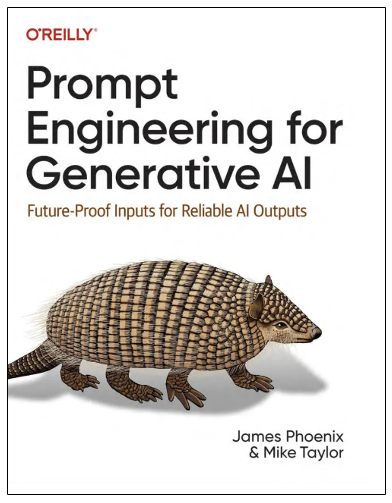
Prompt Engineering for Generative AI: Future-Proof Inputs for Reliable AI Outputs
James Phoenix and Mike Taylor. Sebastopol,CA: O’Reilly Media, Inc. 2024. 424 pages, including index.
Index Terms—prompt engineering, generative AI, AI language models, AI applications.
Reviewed by—Josh Anderson, Information Architect, Paligo.
Prompt engineering is a difficult subject about which to author a book, not only because the subject itself is so nascent but also because information goes out-of-date far quicker than any publishing cycle. Prompt Engineering for Generative AI: Future-Proof Inputs for Reliable AI Outputs attempts to remedy this by focusing not on any one particular artificial intelligence (AI) language model, but by first starting from general principles and then illustrating applications across a large variety of AI language models. The result is a book that is oftentimes dense and overwhelming, but that might just be what some audiences are looking for.
In 2022, I picked up a then-cutting-edge book, GPT-3: Building Innovative NLP Products Using Large Language Models, from this same publisher. Back then, the best authors could do was explain each parameter of the OpenAI application programming interface (API) and offer some ideas for startups that could be built around generative AI. Two years have made quite a difference; that book is now all but obsolete, not only because further iterations of the GPT model have been released since then, but also because the general approach to building AI applications has changed because of all the new services and companies that have sprung up. Prompt Engineering for Generative AI, on the other hand, gives readers much more to chew on. If key generative AI concepts such as “vector database,” “diffusion model,” or “text splitter” still sound like a foreign language to you, I believe you would be better off first browsing YouTube for short, concise explainer videos before tackling a tome such as this. Sure, this book defines these sorts of terms, but usually for only about a paragraph or two before diving into a long series of Python code samples for the reader to put to work immediately on their own projects. This book is primarily for developers. If you do not have a computer in front of you as you page through the book, there will be little that you can do until you return to your keyboard.
Two chapters of the book that I personally found valuable were the “Five Principles of Prompting,” the introductory chapter that approaches the subject from a model-agnostic perspective, as well as Chapter 8, which goes into thorough detail about how to use Midjourney, one of the most popular image generation models on the market today. This is a book for people who are ready to go beyond the surface level and want to dive deep into code examples of actual generative AI applications in action. For the readers who are ready for it, this book offers details that you are not likely to find elsewhere on the printed page.
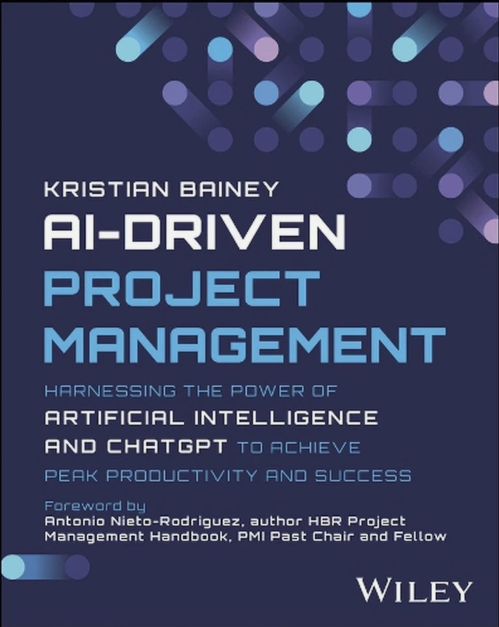
AI-Driven Project Management: Harnessing the Power of Artificial Intelligence and ChatGPT to Achieve Peak Productivity and Success
Kristian Bainey. San Francisco, CA: Wiley. 2024. 384 pages, including index.
Index Terms—artificial intelligence, decision-making optimization, ethical AI practices.
Reviewed by— Novian Tiandini, Student, Universitas Gadjah Mada, supported by Lembaga Pengelola Dana Pendidikan (LPDP), Indonesia.
AI-Driven Project Management: Harnessing the Power of Artificial Intelligence and ChatGPT to Achieve Peak Productivity and Success explores integrating artificial intelligence (AI) and ChatGPT into project management practices. Practical implications include faster, more accurate decision-making, higher efficiency and productivity, and improved team collaboration. AI and ChatGPT can process large datasets, automate tasks, and provide real-time recommendations, enhancing project outcomes. However, the book also highlights the need to address data breaches, misuse of information, and ethical dilemmas in AI decision-making. Continuous monitoring, system updates, and adequate AI literacy are essential for effectively leveraging this technology in project management.
AI has revolutionized project management by optimizing efficiency, decision-making, and resource allocation. It anticipates needs and obstacles enhancing planning and execution. AI automates tasks boosting productivity and innovation. It extends to risk management, which involves assessing risks using historical data. AI streamlines documentation and scheduling reducing administrative burdens and optimizing task allocation. By analyzing data patterns, AI improves decision-making and provides insights for complex projects. Its continuous learning capabilities enable a dynamic, responsive approach that evolves over time.
Kristian Bainey uses a multifaceted methodological approach to investigate AI integration in project management. He uses quantitative methods, such as statistical analysis of project data, to pinpoint the underlying causes of project delays. Qualitative methods, such as expert interviews and case study analysis, provide insights into effective solutions. Bainey uses an exploratory research design, including the deployment of ChatGPT in controlled scenarios, to understand the potential applications and limitations of AI in project management.
This research reveals that material delays are the primary cause of 70% project delays, followed by 20% personnel shortages and 10% weather issues. Proposed solutions include strengthening supply chains, enhancing personnel training, and adapting construction methods. ChatGPT plays a crucial role in predictive analysis, automated forecasting, and project planning optimization. The research emphasizes a balance between AI utilization and human judgment addressing AI hallucination challenges and security measures in AI technology development.
The book highlights the efficiency of AI-based tools in streamlining specific project management tasks, particularly in data processing and analysis. Bainey also emphasizes AI’s accuracy in handling complex data, which enhances decision-making. However, the book acknowledges the AI limitations, including a lack of flexibility in adapting to tasks beyond its programming, as well as the requirements for large datasets and high computational intensity, which can be challenging for smaller projects or organizations.
AI-Driven Project Management targets a wide audience, including project managers, business analysts, information technology (IT) architects, data scientists, developers, managers, executives, entrepreneurs, and business leaders. It caters to all expertise levels, from beginners to advanced practitioners, focusing on those with a basic understanding of project management. It is also valuable for IT specialists and those interested in the intersection of AI, machine learning, and project management. The book bridges the gap between AI technology and practical applications significantly enhancing project outcomes.

